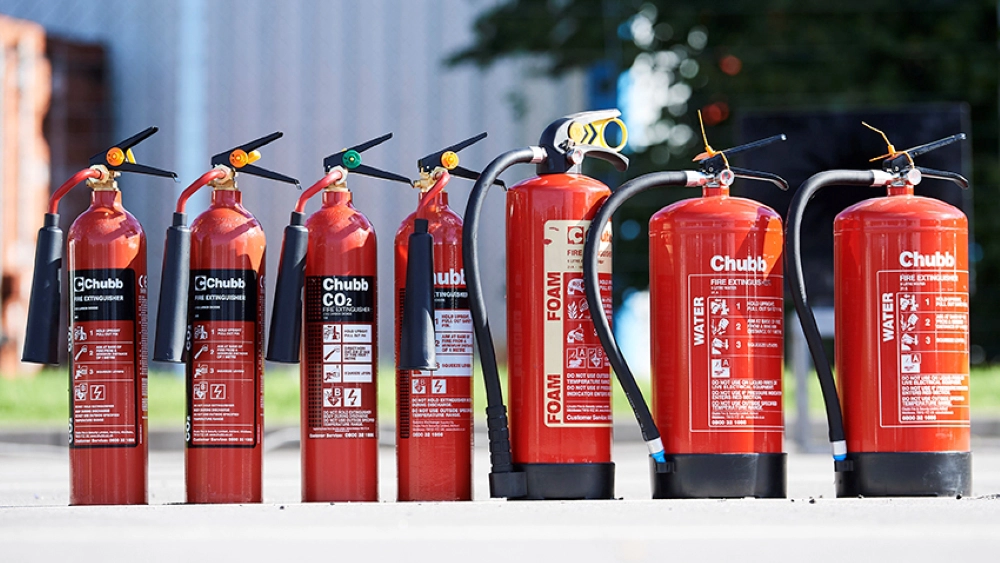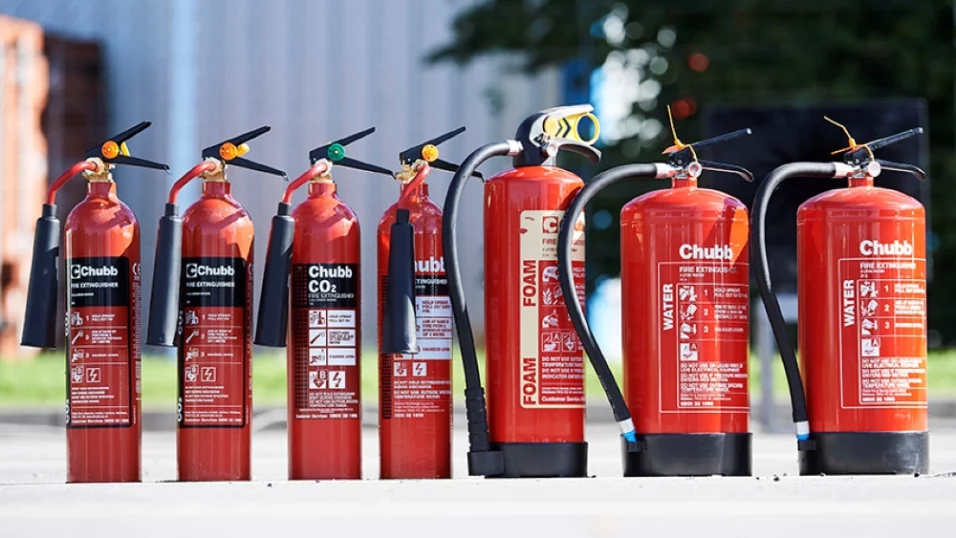



New survey reveals 93% fires extinguished by portable fire extinguishers
By Chubb | 11th May 2022




By Chubb | 11th May 2022
The portable fire extinguisher that has been a staple requirement for commercial buildings for decades is playing an increasing role in putting out fires according to the results of a recent survey. As Chair of the Fire Industry Association (FIA) Services Council, Chubb’s Guy Middleton was elected to head up the group conducting the Fire Extinguisher Use Survey. This involved bringing together technicians from companies in the four main trade associations in the UK – British Fire Consortium (BFC), Fire Industry Association (FIA), Independent Fire Engineering & Distributors Association (IFEDA) and UK Fire Association (UKFA) – to ask businesses that had used an extinguisher on fire the same questions in 2021 that had previously been asked for the original survey undertaken in 2003. The 2021 survey highlighted that some significant trends have appeared which cannot be ignored.
The value of portable fire extinguishers
Most notably the number of fires being successfully extinguished by portable fire extinguishers has increased from 80% in 2003 to 93% in 2021. This figure alone demonstrates the importance of this vital piece of firefighting equipment. Yet, it would appear that individuals still need to be reminded of the value that portable fire extinguishers deliver to society. In 2019, IFEDA was alerted to a news article advising that a Housing Association responsible for managing more than 7000 premises in the North of England had removed fire extinguishers from communal areas in their properties. Residents were apparently told that ‘it is not considered necessary to provide firefighting equipment in the buildings and such equipment should only be used by people who have been trained.’ This however entirely contravenes existing legislation.
The legal requirements
The Regulatory Reform (Fire Safety) Order 2005 recommends that all premises are provided with appropriate firefighting equipment. It says: ‘Where necessary in order to safeguard the safety of relevant persons, the responsible person must ensure that the premises are equipped with appropriate firefighting equipment and firefighting equipment is simple to use and indicated by signs. The responsible person must take measures for firefighting in the premises and nominate competent persons to implement those measures and ensure that the number of such persons, their training and the equipment available to them are adequate.’ It also states that for the majority of buildings, ‘fire aid’ firefighting equipment – typically, fire extinguishers, blankets and buckets – should be sufficient. For more complex premises it advises that automatic fire suppression systems may be necessary. In fact, the portable extinguisher landscape has improved significantly in recent years. The standard BS 5306-8 that focuses on the installation of fire extinguishing equipment in premises has been revised twice. One of the main improvements includes making sure the most suitable extinguisher is the nearest one to any known hazard, for example a Wet Chemical extinguisher near a deep fat fryer in a kitchen.
Other survey findings
Another significant discovery from the new survey was that the contents inside extinguishers has become more efficient since 2003, whilst the way we use them has become more uniform and intuitive. In some areas there has been little change. For instance, the percentage of fires that the Fire & Rescue Service (FRS) is called to has increased slightly to 27%. In addition, respondents in both surveys agreed with the same interpretation that any extinguisher will put out a small fire and that, once a fire becomes too big, it will be difficult to tackle with any size or number of extinguishers. As a leading provider of fire safety solutions, Chubb considers the use of portable fire extinguishers a vital and common sense solution to tackle and extinguish small fires before they escalate. Aside from the value that portable fire extinguishers offer in terms of saving lives, they also offer monetary savings too. Based on 2003 statistics, recent estimations are that fire extinguishers actually save £8.6 million each year in terms of FRS resources, while also saving the UK’s economy over £840 million. Perhaps most surprising of all is that in the 2021 survey just 52% of users had received training in the use of fire extinguishers yet the correct extinguisher was used 93% of the time. Whilst the use of a portable fire extinguisher is reasonably intuitive as they are easily identifiable and operable, training is essential to help employees choose the best and safest type to tackle each incident. Check this link on Fire Extinguisher Use Survey to read a summary of the 2021 survey.